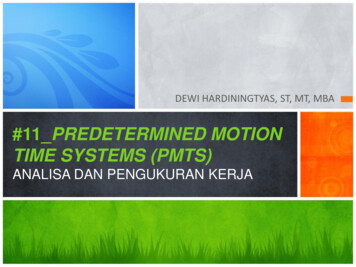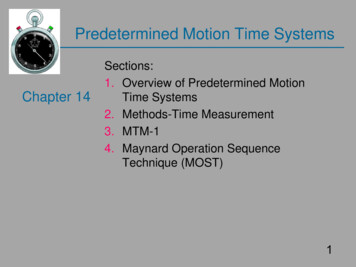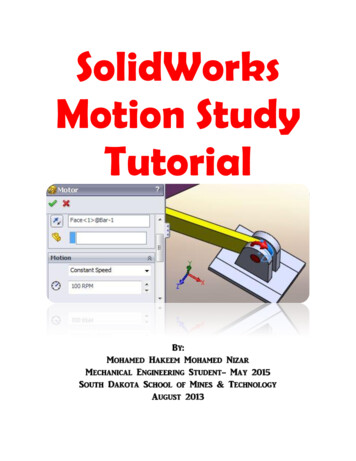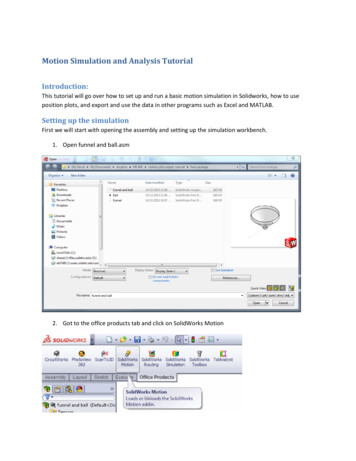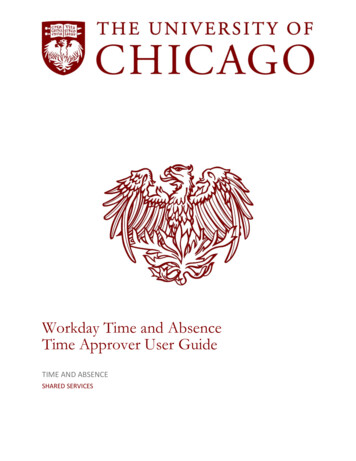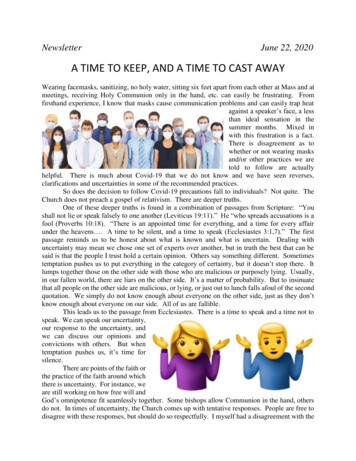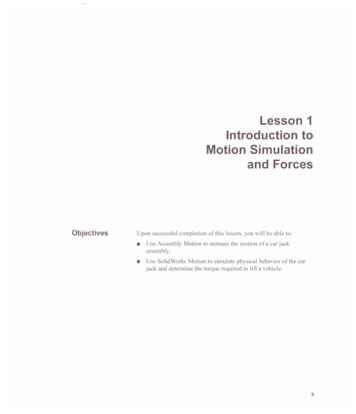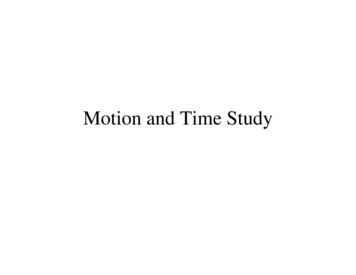
Transcription
Motion and Time Study
The Goals of Motion Study Improvement Planning / Scheduling (Cost) Safety
Know How Long to Complete Task for Scheduling (Sequencing) Efficiency (Best Way) Safety (Easiest Way)
How Does a Job Incumbent Spend a Day Value Added vs. Non-Value Added
The General Strategy of IE to Reduce andControl Cost Are people productive ALL of the time ? Which parts of job are really necessary ? Can the job be done EASIER, SAFER andFASTER ? Is there a sense of employee involvement?
Some Techniques of IndustrialEngineering Measure– Time and Motion Study– Work Sampling Control– Work Standards (Best Practices)– Accounting – Labor Reporting Improve– Small group activities
Time Study Observation– Stop Watch– Computer / Interactive Engineering Labor Standards (Bad Idea) Job Order / Labor reporting data
History Frederick Taylor (1900’s)Studied motions of iron workers – attempted to“mechanize” motions to maximize efficiency –including proper rest, ergonomics, etc. Frank and Lillian Gilbreth used motion picture tostudy worker motions – developed 17 motionscalled “therbligs” that describe all possible work.
GETPUTGET WEIGHTPUT WEIGHTREGRASPAPPLY PRESSUREEYE ACTIONFOOT ACTIONSTEPBEND & ARISECRANKGPGWPWRAEFSBC
Time Study (StopwatchMeasurement)1.2.3.4.5.6.List work elementsDiscuss with workerMeasure with stopwatch (running VS reset)Repeat for n ObservationsCompute mean and std dev of work station timeBe aware of allowances/foreign element, etc
Work Sampling Determined what is done over typical day Random Reporting Periodic Reporting
Learning Curve For repetitive work, worker gains skill,knowledge of product/process, etc overtimeThus we expect output to increase overtime as more units are produced over timeto complete task decreases as more unitsare produced
Traditional Learning Curve
Actual CurveChange, Design, Process, etc
Learning Curve Usually define learning as a percentage reductionin the time it takes to make a unit. The definition says a doubling of the total numberof units made produce a constant decrease in thetime per unit An 80% learning curve implies a 20% decrease inunit time with each doubling of the numberproduced (90% implies 10% decrease, 100%implies no improvement)
Learning Curve For an 80% learning Curve:UnitUnit Time (hours)1102(.8)(10) 84(.8)(8) 6.48(.8)(6.4) 5.1216(.8)(5.12) 4.096
Learning Curve We can also compute the time to completethe nth unit based on the learning %, and thetime for the 1st unitTn T1 x n bWhere, b (natural log of learning %) /(natural log of 2)
Learning Curve From Previous 80% learning curveexample:b ln (.8) / ln (2) -.22314/.69315 -.322For 3rd unit:T3 T1 (3 (ln(.8)/ln(2)))T3 T1 (.702)
Learning Curve Can plot using log/log paper as a straightline and can also got unit curve and averagecurve
Learning Curve Applies Mass Production – Assembly line G.T. Cell – Repetitive work Other places where rep. Works performed.
Time Study (Stopwatch Measurement) 1. List work elements 2. Discuss with worker 3. Measure with stopwatch (running VS reset) 4. Repeat for n Observations 5. Compute mean and std dev of work station time 6. Be aware of allowances/foreign element, etc


